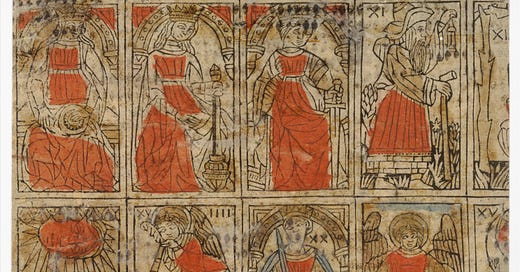On The Tarot And Writing
Tarot may or may not show you your future, but it can show you your blind spots. And you can use that in your writing.
This question came from a reader on the night when I was answering questions on Instagram last month: How does reading the Tarot affect your writing? The answer was too big for the box, but perfect for the newsletter.
The Querent, to start, is the name of someone sitting down to ask the Tarot cards a question. So the influence on me is, you could say, la…
Keep reading with a 7-day free trial
Subscribe to The Querent to keep reading this post and get 7 days of free access to the full post archives.



